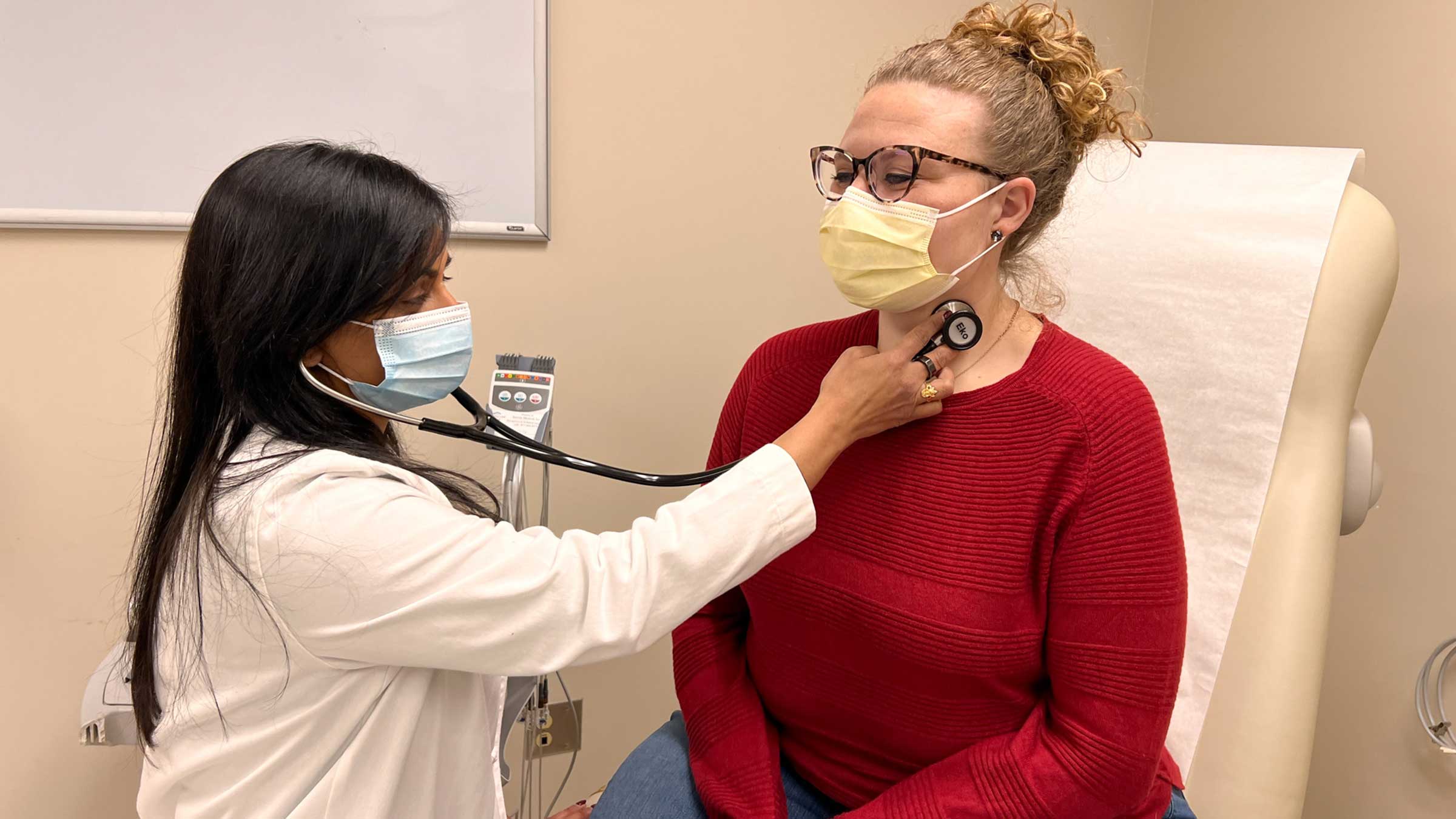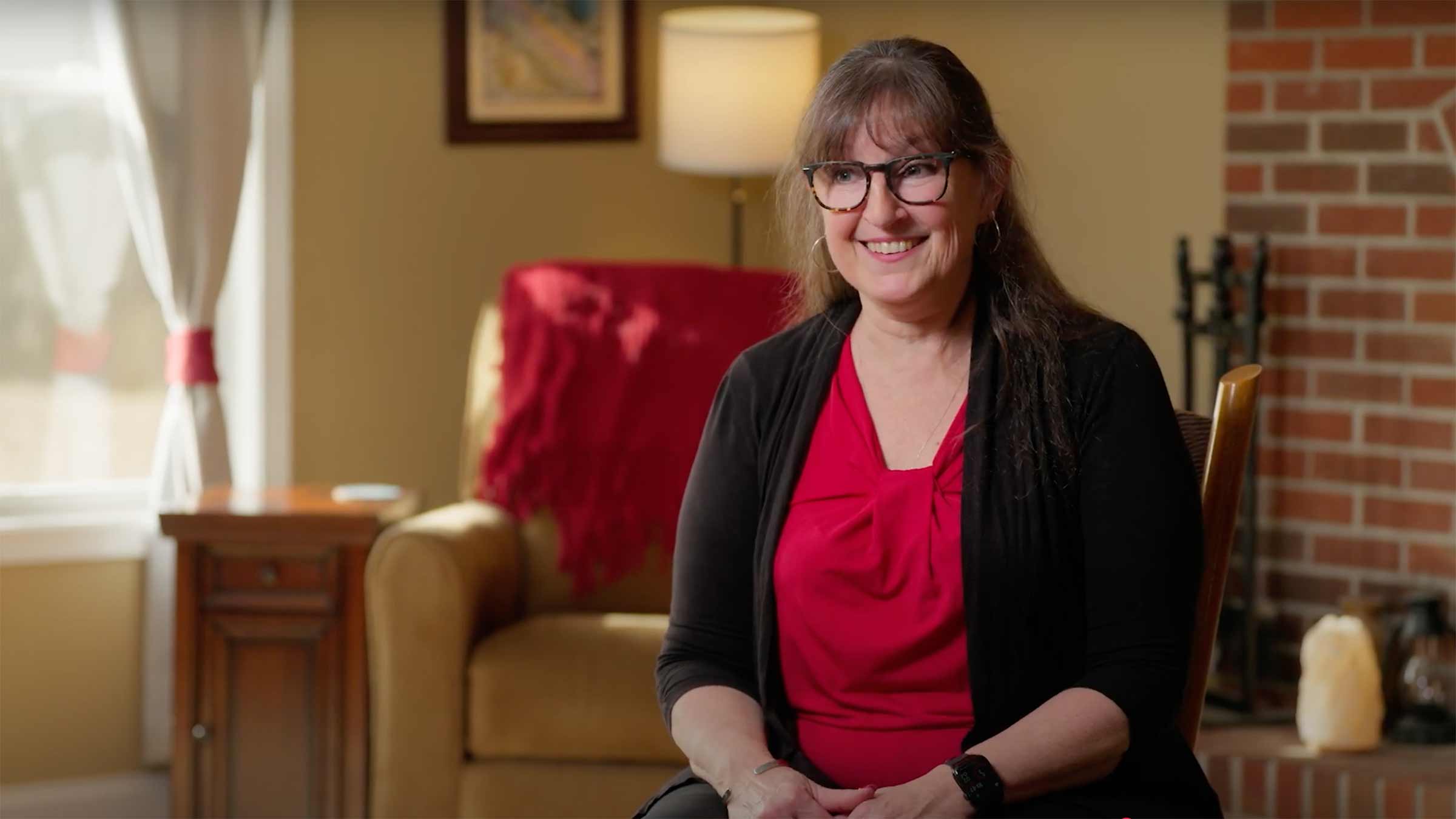Recognizing the less common signs of heart disease in women
Women can have very different symptoms of heart disease than men. Laxmi Mehta, MD, specializes in helping women get the right diagnosis and care.
Women can have a heart condition without knowing it. The signs aren’t always obvious.
For both women and men, the most common symptom of a heart attack is pain in the middle or left side of their chest. Often, that pain extends down their left arm.
But some women feel only mild chest pressure. Their jaw or upper back might hurt. They may be nauseous, light-headed or short of breath.
“They may not realize they’re having a heart attack,” says Laxmi Mehta, MD.
As a result, some women might just go back to bed, back to work or back to their errands.
Even if they do seek medical help, a health care provider could miss the more subtle signs of a heart attack — especially if the women aren’t complaining of intense chest pain.
It can be a while before some women are diagnosed with heart disease, a range of conditions affecting the heart. At times, women don’t know until it’s too late — when they’re in the emergency department having a heart attack.
Compared to men, women are more likely to have a heart attack without blocked arteries to the heart, the most common cause of heart attacks. That can make it more difficult for health care providers to diagnose a heart attack in some women. And pregnancies, certain health conditions and even menopause can all raise the risk of women developing heart disease.
‘There’s something wrong with me’
Beginning in her mid-40s, Judith Dann had crushing pain in her chest, a classic sign of a heart condition. Even so, she had trouble getting treatment that offered long-lasting relief.
She had to be persistent, she says, because her concerns were dismissed by some medical professionals:
You’re too young to have a heart condition.
Maybe it’s just anxiety or not being optimistic.
You just need to smile more.
And calm down.

“I sometimes felt like I was on this island by myself saying, ‘There’s something wrong with me,’” says Dann, now 58, a mother of three and a professor of ancient history and Latin at Columbus State Community College.
That changed when Dann, who lives on a 100-acre farm in Utica, came to The Ohio State University Wexner Medical Center Richard M. Ross Heart Hospital in 2014 and met with Dr. Mehta.
She had just suffered a mini-stroke.
All of Dann’s family members had gone to the Ohio State Wexner Medical Center for treatment, and it’s where she could see a cardiologist who specialized in women’s heart health.
“She looked into everything,” Dann says of Dr. Mehta. “She didn’t discount one symptom. She not only listened to me but took action immediately.”
After extensive tests, Dr. Mehta diagnosed Dann with angina, chest pain because not enough oxygen-rich blood was reaching her heart.
“I remember being shocked that what I had would be with me for the rest of my life,” Dann says.
But Dr. Mehta helped Dann get on the right doses and types of medications, and left Dann feeling confident that if any problems came up, as her doctor, she would handle them.
“I felt a wave of relief when I met Dr. Mehta,” Dann says.

Heart conditions more common in women than in men
When people think of heart attacks, they most often think of plaque or cholesterol blocking arteries to the heart. However, heart attacks can occur without plaque clogging those passageways, and those types of heart attacks are more likely to occur in women than in men.
Sometimes the wall of an artery can tear, a condition called spontaneous coronary artery dissection (SCAD). The tear can block blood flow to the heart and can happen to people even as young as in their 30s, Dr. Mehta says. It can be fatal.
SCAD is more common in women than in men. Now, with better ways to diagnose the condition, and more medical providers aware of it, an increasing number of people are being diagnosed with SCAD.
“Treating a heart attack from SCAD is very different than treating a heart attack from plaque-clogged arteries. So, you’ve got to recognize that it’s happening,” Dr. Mehta says.
Doctors typically put in a stent to open blocked arteries, but people with SCAD often need to be treated just with medications. If they receive a stent, the tear in the wall of their artery can worsen.
Another heart condition more likely to happen to women is broken heart syndrome. That’s when the heart muscle temporarily becomes weak, unable to deliver enough blood throughout the body. Intense physical or emotional stress can cause broken heart syndrome.
“When we do an ultrasound of the heart, we see the heart has ballooned out, as if there's been a major heart attack. But there’s no sign of arteries being blocked,” Dr. Mehta says.

It’s important for people with broken heart syndrome to be treated specifically for a weakened heart muscle. A stent placed in one of their arteries, which would help someone with clogged arteries, could be harmful, Dr. Mehta says.
Though broken heart syndrome can be fatal, most people fully recover after a few months on medications as their weakened heart muscle grows stronger.
Women have more risk factors for heart disease
Heart disease is the No. 1 killer of both women and men in the United States. And yet, most heart disease is preventable.
Though women are just as likely to have a heart attack as men, women have some additional risk factors.
- Autoimmune disorders are far more common in women than in men, and autoimmune disorders such as lupus and rheumatoid arthritis cause inflammation, which can damage the heart and other organs.
- Early menopause, which happens before the age of 40, depletes the body of estrogen, lessening its protective effects against heart disease. At any age, menopause can increase blood pressure and cholesterol, as well as stiffen arteries.
- Conditions that happen during pregnancy and childbirth may also increase the lifetime risk of developing heart failure, heart attacks and strokes:
- High blood pressure
- Gestational diabetes
- Premature birth

“Pregnancy is really a window to the future of what your health may look like,” Dr. Mehta says.
If you had a health condition while pregnant, it’s best not to forget about those conditions after you give birth, Dr. Mehta says.
“Women need to remember that these are factors that may lead to future disorders affecting their heart and blood vessels,” Dr. Mehta says.
She recommends working with a health care provider to get regular screenings and manage those conditions that happened during pregnancy, so they don’t risk the health of your heart.
Living well with heart disease
Dann had a healthy diet and exercised regularly when she began having chest pain. At the time, she was a mother of three teenagers, and she was terrified.

Left untreated, her heart disease could have ended her life, she says. Which is why she feels so fortunate Dr. Mehta put her on the right combination of medications. For the first time, she felt as if someone had truly listened to her and didn’t discount her.
“I was comforted knowing that I was being heard,” Dann says.
In over a decade since, Dann hasn’t had any chest pain. She no longer worries about her health.
On the farm where she lives with her husband, she takes regular walks in the woods and along the river, watching how the seasons change the landscape. She does yoga and moderate workouts. Except for not riding roller coasters or scuba diving, Dann has no limits in what she can do.
“I honestly don’t even feel like I have a heart condition,” she says. “My life has been restored.”

Your heart is in the right place
Learn more about advances in care and treatment for patients at The Ohio State University Heart and Vascular Center
Expert care starts here




